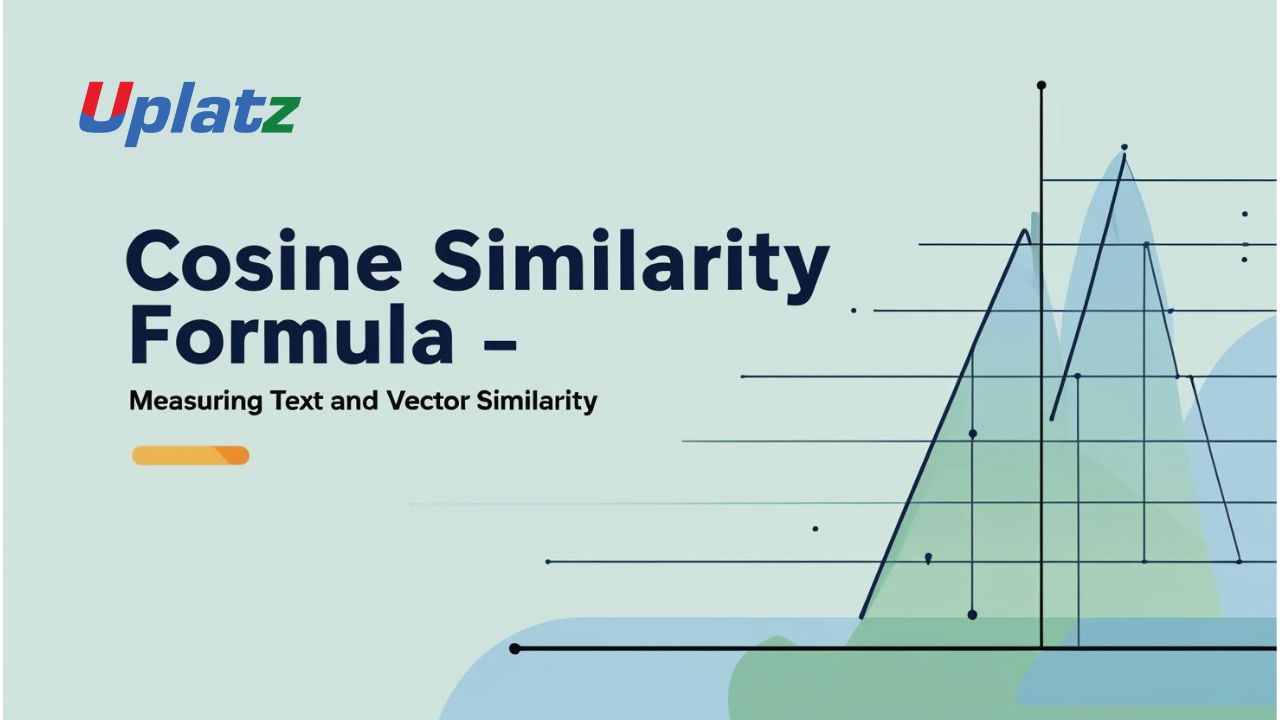 🔹 Short Description:
🔹 Short Description:
Cosine Similarity measures the cosine of the angle between two non-zero vectors, helping determine how similar they are regardless of their magnitude.
🔹 Description (Plain Text):
Cosine Similarity is a fundamental metric used to calculate the similarity between two vectors in a multi-dimensional space. It’s widely used in text analysis, recommendation systems, and clustering, where objects such as documents or user preferences are represented as vectors.
The formula is:
Cosine Similarity (A, B) = (A • B) / (||A|| × ||B||)
Where:
- A • B is the dot product of vectors A and B
- ||A|| and ||B|| are the magnitudes (or lengths) of vectors A and B
- The result is a value between -1 and 1, where:
- 1 means perfectly similar (same direction)
- 0 means orthogonal (no similarity)
- -1 means completely opposite
Unlike Euclidean distance, cosine similarity focuses on orientation, not magnitude, making it particularly useful in text mining, where two documents may differ in length but still share similar content.
Example:
In a bag-of-words model, two documents may contain different word counts, but if the words occur in similar proportions, the cosine similarity will be high—even if one document is much longer.
Real-World Applications:
- Search engines: Ranking documents by similarity to the search query
- Chatbots: Matching user input with known intents
- Plagiarism detection: Comparing student submissions for content overlap
- Recommendation systems: Suggesting products with similar user profiles
- Customer segmentation: Clustering users based on behaviour or preferences
Key Insights:
- Cosine similarity helps normalize for document length, making it ideal in sparse datasets
- Often used with TF-IDF vectors to compare texts
- Useful when the magnitude of vectors is less important than their direction
- Supports high-dimensional data comparison with minimal preprocessing
- Common in clustering algorithms like K-means and in information retrieval
Limitations:
- Sensitive to vector construction—garbage in, garbage out
- Doesn’t capture semantic meaning (e.g., “car” and “automobile” are unrelated)
- Requires preprocessing such as stemming, tokenization, and normalization
- In dense vector spaces, results may be less interpretable without dimensionality reduction
- Limited performance in modern NLP compared to transformer-based embeddings
Despite these limitations, Cosine Similarity remains a trusted and efficient tool for comparing documents, user preferences, or any data represented as vectors in high-dimensional space.
🔹 Meta Title:
Cosine Similarity Formula – Calculate Text Similarity in Vector Space
🔹 Meta Description:
Explore the Cosine Similarity formula to measure how alike two vectors are, widely used in text mining, recommendations, and NLP. Learn its mathematical basis, practical applications, and advantages in high-dimensional spaces.
